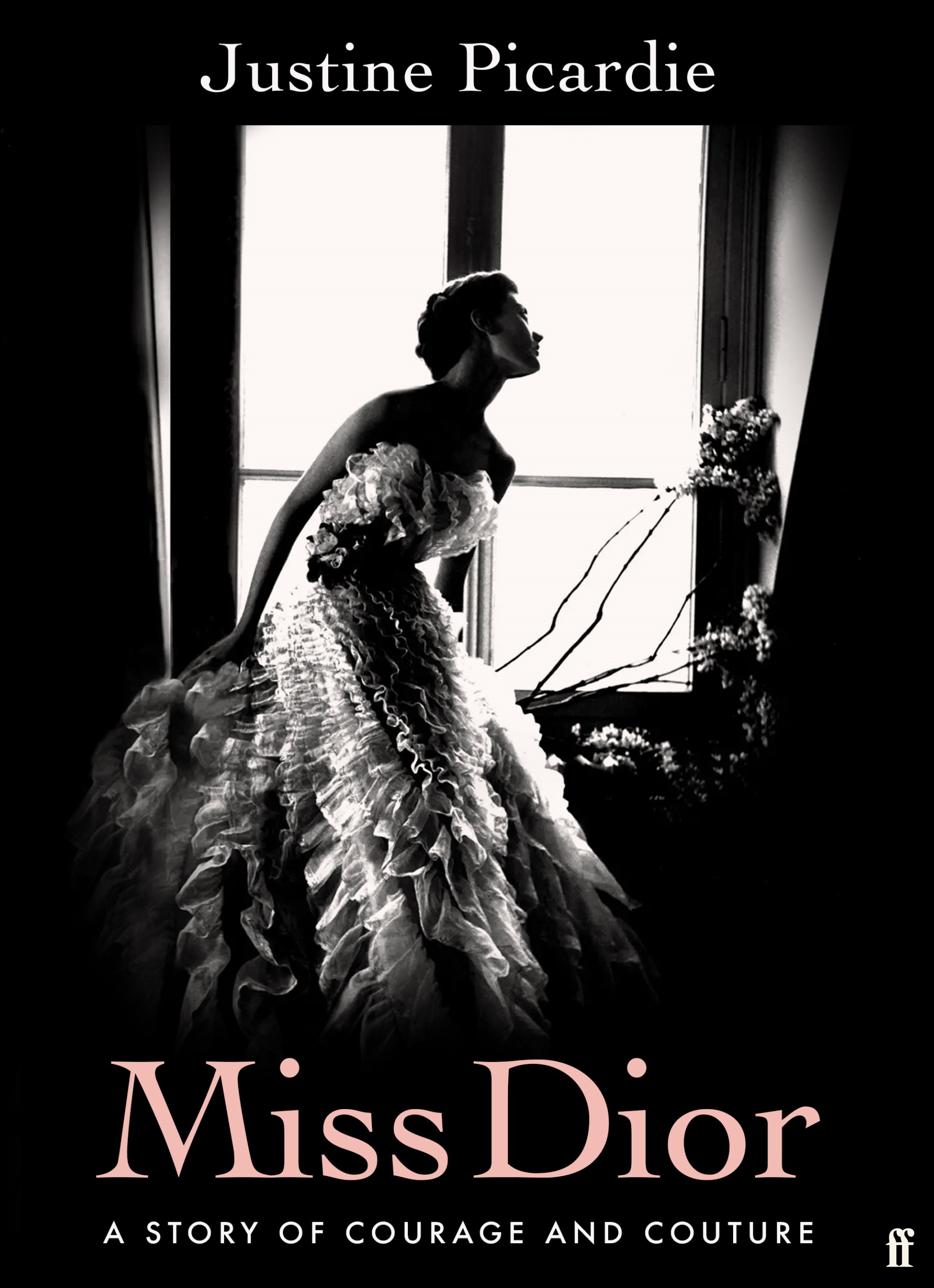Miss Dior: Justine Picardie (1947)
Justine Picardie (c) Oliver Holms
In this episode we meet the resistance fighter Catherine Dior, youngest sister of one of France’s most renowned designers, and we consider the question: how can individuals and nations ever move on from the trauma of war?
*** [About our format] ***
In 1947, Christian Dior launched his debut collection in Paris and became an immediate sensation. His designs were characterised by enormous, fairy-tale-like skirts and hyper-feminine silhouettes. It was christened the ‘New Look’ by the then editor of Harper’s Bazaar, Carmel Snow, because it stood in stark contrast to the sober women’s fashion of recent years. During the war, many women had become accustomed to wearing uniforms and the rationed use of fabric had led to shorter, tighter skirts to save material.
Yet what made the romance and glamour of Dior’s collection even more extraordinary was the dark backdrop of post-war Paris.
Barely eighteen months before, Dior’s youngest and most treasured sister, Catherine, had been liberated from the German concentration camp Ravensbrück. She had been sent there having been arrested and tortured by the Gestapo for her involvement in the French Resistance.
All over the country, civilians and statesmen tried to grapple with the task of reuniting a country deeply traumatised by occupation. Trials for collaborators and vigilante punishments and executions were commonplace. Many of those, like Catherine, who returned from imprisonment in Germany felt an enormous sense of isolation in the knowledge that their fellow countrymen would never truly understand what they had experienced.
As our guest today, the writer and former magazine editor Justine Picardie, writes in her new book, Miss Dior: A Story of Courage and Couture: “How could anyone imagine an enchanting dream after a time of such madness and horror?”
But as Justine and Artemis discuss in this episode, beauty often is a meaningful antidote to desolation and despair. Just as the Frenchwomen with whom Catherine Dior shared her time at Ravensbrück found their own ways of resisting their captors and harbouring joy, whether through crafting tiny trinkets or sabotaging machinery in the factories where they worked.
Catherine’s life provides the focal point behind Miss Dior. Catherine was the inspiration behind Dior’s iconic fragrance and she went on to live until she was ninety-one, regularly contributing to upkeep of the Dior archives. Yet, as is so common for the survivors of war’s atrocities, she rarely, if ever, spoke of her experiences in the Resistance.
Yet something of her character can be taken from the words of advice she gave to a French veteran of another war later in her life, when he asked her how she managed to survive: “Love life, young man, love life.”
Click here to order Justine’s book from John Sandoe’s who, we are delighted to say, are supplying books for the podcast.
*** Listen to the podcast ***
Show notes
Scene One: 3 February, 1947, the War Crimes Court in Hamburg, Germany: the last day of the trial of 16 defendants (nine men and seven women) accused of crimes committed at Ravensbrück concentration camp.
Scene Two: 12 February, 1947, 30 Avenue Montaigne, Paris: in his newly established couture house, Christian Dior is making his debut, with a collection that will revolutionise the world of fashion.
Scene Three: Late May, Provence, 1947: at the family farm that Catherine Dior inherited from her father, she is undertaking the annual harvest of rose de Mai, that will be used as a vital ingredient in her brother’s perfumes.
Memento: A very small bottle of the original Miss Dior.
People/Social
Presenter: Artemis Irvine
Guest: Justine Picardie
Production: Maria Nolan
Podcast partner: Unseen Histories
Follow us on Twitter: @tttpodcast_
Or on Facebook
See where 1947 fits on our Timeline
About Justine Picardie
Justine Picardie is the author of six books, including her critically acclaimed memoir If the Spirit Moves You: Life and Love After Date, and the international bestseller Coco Chanel: The Legend and the Life. She is a former editor of Harpers Bazaar UK and Town & Country UK.
Women at Ravensbrück Concentration Camp, 1939
Twelve Dior models at Orly airport on route to Moscow for the 'Dior in Moscow' fashion presentation.
Image credit: Flickr
Listen on YouTube
Complementary episodes
The Liberation of Ravensbrück: Selma van de Perre (1945)
At the age of ninety-eight, three quarters of a century after she was liberated from Ravensbrück Concentration Camp, Selma van de Perretells her remarkable story to the New York Times bestselling author Ariana Neumann.
When Time Stopped: Ariana Neumann (1944)
This deeply moving episode of Travels Through Time, Ariana Neumann tells for the very first time the absolutely extraordinary story of her father, Hans, a young Jewish man from Prague, who managed to outwit the Nazis and survive the Holocaust.
The House of Fragile Things: James McAuley (1942)
James McAuley takes us back to a moment of crisis in war-time Paris. As round ups became a terrifying feature of daily life in Paris, just who could truly consider themselves safe?
Click here to order Miss Dior by Justine Picardie from our friends at John Sandoe’s Books.
Catherine was the sister of Christian; in WW2 she worked with the French Resistance but was arrested in 1944 and sent to Ravensbrück. Miraculously she survived, and was awarded both the Croix de Guerre and the Légion d’Honneur. After the horrors of the war she became a flower trader, then a flower farmer. She died in 2008. Illustrated.













